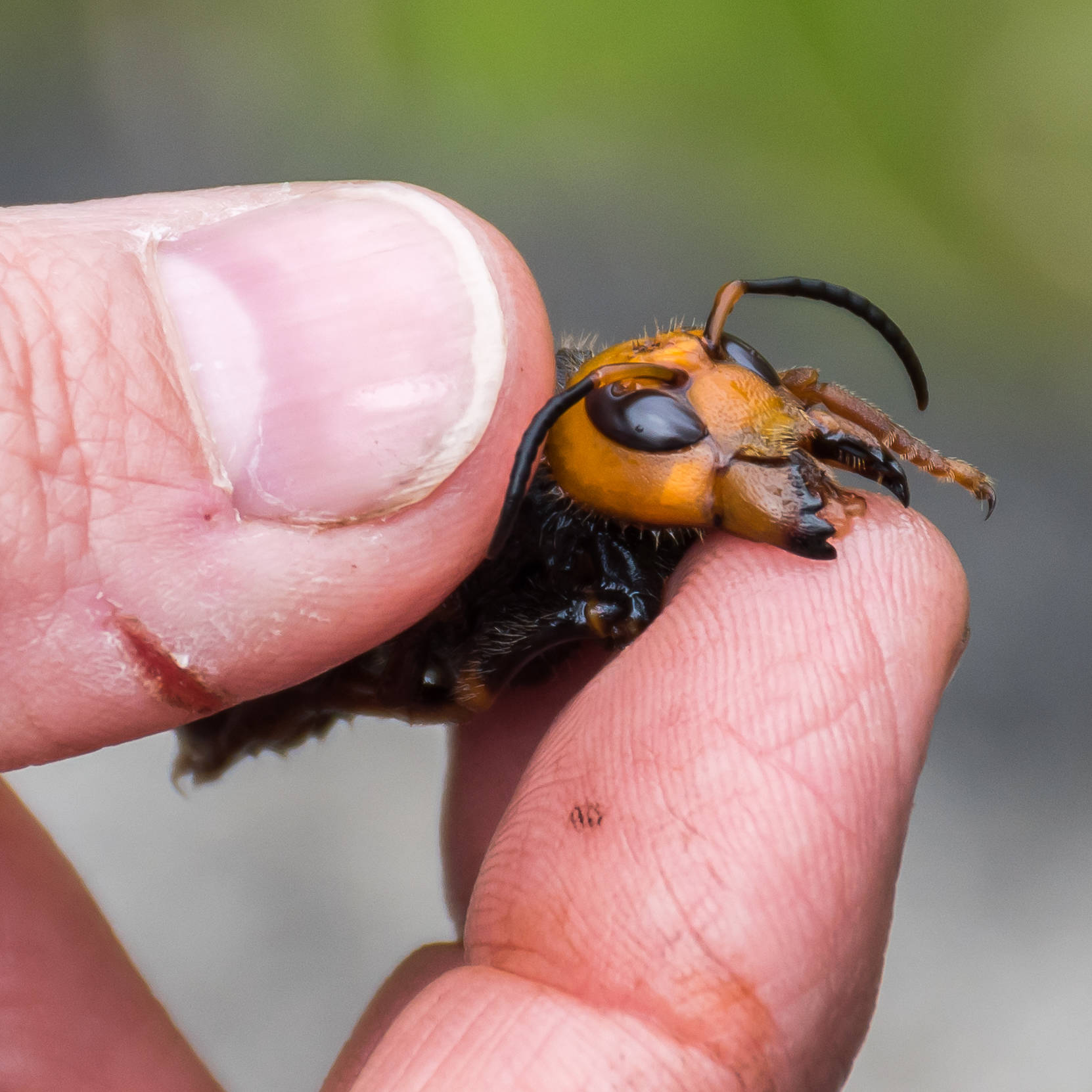‘Murder hornets’ have not been seen on Whidbey Island, but they would like it here.
“They should find this environment very suitable,” WSU Extension Director Tim Lawrence said, comparing Whidbey’s environment to Japan, where one of the subspecies of hornet is believed to originate from.
Sightings in Washington state of the Asian giant hornet, the world’s largest hornet, have generated buzz online and in daily conversations. The insects are known for decapitating and decimating entire colonies of honey bees in a matter of hours. They made worldwide news in 2013 for attacking more than 1,500 people in China and killing at least 42 in three months.
According to a fact sheet published by the Island County Washington State University Extension, if the hornet becomes established in Washington, “it will have a severe and damaging impact on the honey bee population, the beekeeping industry, the environment, public health, and the economy.”
So far, there have only been two confirmed sightings of the hornet, according to the Washington State Department of Agriculture, and both sightings were in Whatcom County.
According to WSDA, the hornets are usually 1.5-2 inches in length, with large orange or yellow heads and prominent eyes. Their abdomens are striped black yellow and they usually form large colonies in the ground.
The invasive species preys on many insects, but, according to WSU, the biggest concern is the impact of the hornets on honeybees. A group of 15 to 30 hornets can slaughter 30,000 to 50,000 bees in just hours. The hornets chew the bee larvae into a paste and feed the paste to their own larvae.
According to the WSDA, the hornets are not normally aggressive toward people, but they will attack if they are threatened and can sting repeatedly.
“Most people are not going to see any severe issues from one sting,” said WSDA Public Engagement Specialist Karla Salp. She added that, if someone is allergic to bee stings, the hornets can be more dangerous.
In order to keep the hornets from establishing a presence in Washington, WSDA has begun setting up traps, with the bulk of the trapping to begin in June or July. WSDA will also tag some hornets in order to follow them to their hives.
The general public may also set up bottle traps with rice wine and orange juice, then report sightings to WSDA.
Salp said that, so far, most reports submitted have not been confirmed as Asian giant hornets.
“We’ve had hundred of reports if not thousands of reports,” Salp said. “But none of the ones we’ve reviewed so far have had any additional confirmed sightings.”
According to WSDA, the Asian giant hornet is easily confused with native wasps, such as paper wasps, yellow jackets, bald-faced hornets and the elm sawfly. Reported sightings should have pictures.
For local beekeeper Robert Niles of Shady Lane Bees, the hornets are another challenge to beekeeping.
“My major concern is that we’ve already taken a hit with the tracheal mites and the other mites and of course insecticides,” Niles said. “This just adds another issue to have to deal with.”
With only two confirmed sightings, Niles said he doesn’t know how big of an issue the hornets will be, but he will continue to keep watch over his hives.
Lawrence said there is a lack of information on how well established the giant hornets are in the state.
“The whole term ‘murder hornet’ is a total misnomer and should not be used,” Lawrence said. “They are going to be a problem, but they’re no worse than any other wasp or hornet.”
n To report a sighting visit https://agr.wa.gov/departments/insects-pests-and-weeds/insects/hornets



